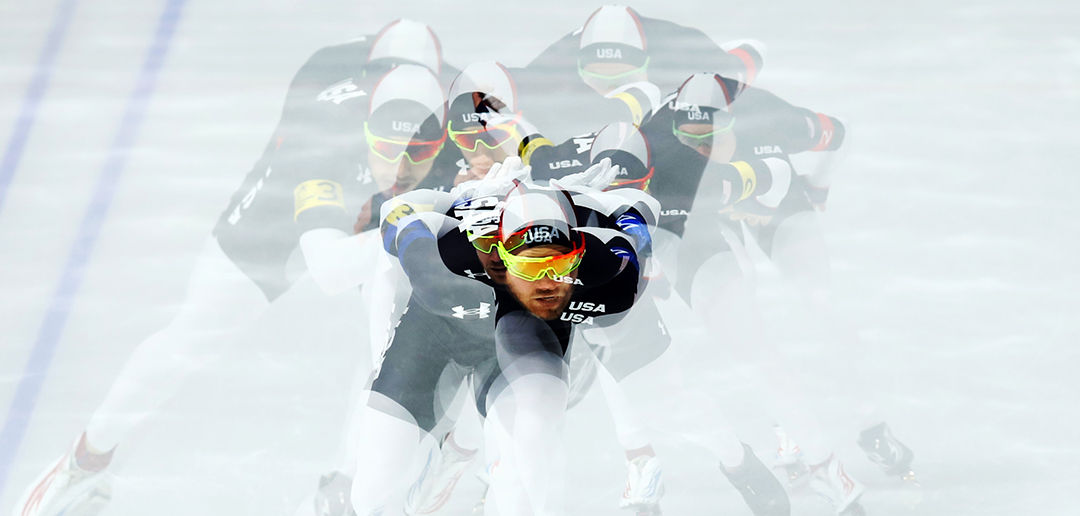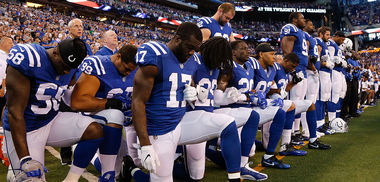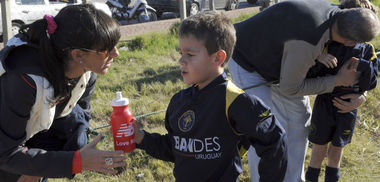Increasingly, both opening and closing ceremonies at Olympic festivals function as events themselves, bookends to the highly anticipated competitions they bracket. Pyeongchang was certainly no different, one more city burdened with trying to outdo previous locales in spectacle and grandeur at the beginning and end of the games.
Given the estimated billion people who watched both the Beijing and London opening ceremonies—the 28% fall off of American viewership in Rio notwithstanding—the pre- and post-event spectacles arguably attract larger followings than the competitions themselves!
During these non-competitive portions of the games, we experience national pride in the home team combined with the collective joy that accompanies an international carnival, along with the aura of indestructible confidence radiating from human bodies at their physical peak.
As delivered through our TVs, everyone gathered in the stadium venue appear to be friends and long-time companions though most met only briefly and will never see each other again. Once again we’re confronted with a reminder of the Humanistic spirit behind the modern Olympics—the creation of a “why can’t we all just get along?” vibe that arrives the moment the first team enters the stadium.
Get our "Top Articles" sent to your inbox weekly.
The Illusion of Peace
The five interlocking rings which popularly brand each Olympic gathering contain symbolism toward this noble goal of world peace, “represent(ing) the union of the five continents and the meeting of athletes from throughout the world at the Olympic games.”
For athletes from Africa, the Americas, Asia, Europe, and Oceana, the two week window of competition attempts to temporarily transcend the social and political realities facing them at home, offering a “union” that illustrates the humanistic hope of a life lived in peace under the global sun.
Rio summer Olympic hero Abbey D’Agostino noted the undeniable goodwill and the power of unity experienced when she said, "By far the best part of my experience of the Olympics has been the community it creates, what the Games symbolizes. Since the night of the opening ceremonies, I have been so touched by this—people from all corners of globe, embracing their unique cultures, yet all uniting under one celebration of the human body, mind, and spirit. I just keep thinking about how that spirit of unity and peace is stronger than all the global strife we're bombarded with and saddened by on a daily basis."
She’s right, of course. The power of unity and peace—of love—is always more powerful than global strife in the end. But as history repeatedly shows, unity and peace always devolve into strife. For humans, strife seems easy to maintain; unity and peace, not so much.
Occasionally even amid heavily armed security—its presence alone an ironic counter to the pretense of a manufactured global peace—social and political turmoil still force their way into the Olympic narrative. Recalling the tragedies of the 1972 Israeli murders in Munich, the 1996 park bombing in Atlanta, and the mutual boycotting of the games by the United States and the USSR in 1980 and 1984 as examples, we are reminded that the message of peace created by sporting events and choreographed harmony is a constantly frustrated mirage, a hope that cannot be satisfied in this life.
A Ceremony You’ll Want to Attend
Nevertheless, the ceremonies offer a beautiful yet distorted shadow of another envisioned spectacle, where the nations gather together once again and the hope of peace is finally and fully realized. The writer of Revelation describes a futuristic scene, saying
“I looked and there before me was a great multitude that no one could count, from every nation, tribe, people and language, standing before the throne and in front of the Lamb (who is Jesus)…And they cried out in a loud voice, ‘Salvation belongs to our God, who sits on the throne, and to the Lamb’…They fell down on their faces before the throne and worshiped God, saying, ‘Amen! Praise and glory and wisdom and thanks and honor and power and strength be to our God forever and ever. Amen!”
Opening and closing ceremonies all rolled into one knee-buckling moment. The central character of this scene changes from the people themselves to Jesus—He becomes the substance of their experience.
Peace Personified
True peace isn’t brought about by people trying to get along under their national banners, intoxicated by the spirit of the games.
Instead, it is established and anchored in the person and work of Christ himself, both in His forgiving of our sins and His final dominion over the universe.
In the Revelation scene, rather than celebrating themselves, the nations gather to worship Jesus, and the peace experienced revolves around His greatness, His long-suffering love toward His people, His sovereign rule over the universe, and his final justice inspired defeat over evil and the nations which stand against Him.
He is the lone victor who wears the crown, the conqueror standing on His cosmic podium whose worshipers create the anthem that celebrates His victory.
The Pyeongchang Winter Olympics provided another opportunity for the world to celebrate our innate desire for peace, while watching mini-battles that culminated in medals and anthems, individual glory and national pride.
But they also inadvertently foreshadow a day when people from “every nation, tribe, people and language” will gather together to celebrate the One who ultimately provides the very peace they seek, a hope partially realized in real time in the person of Jesus Christ.
Previously posted as “The Closing Ceremonies and the End of Time” on DesiringGod.com














